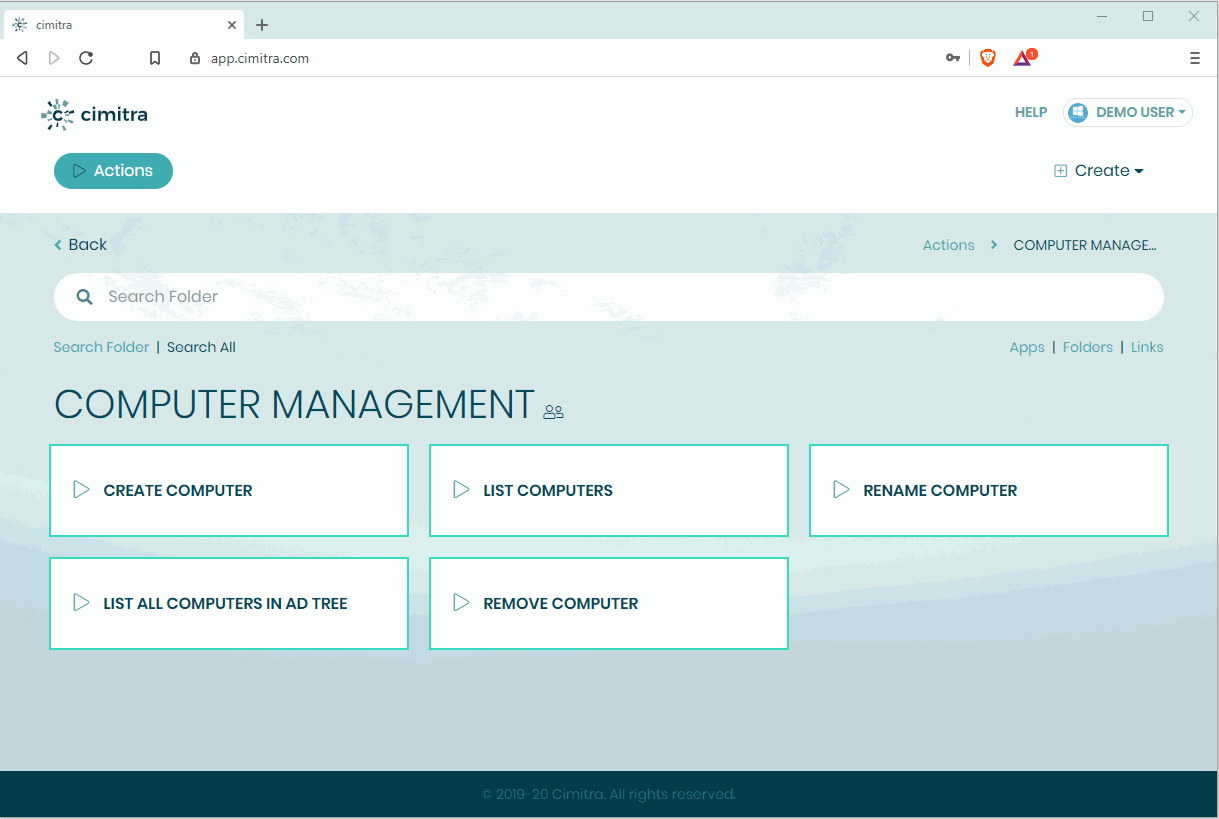Cimitra System Overview
Cimitra was designed to allow smart IT people to safely delegate routine IT tasks to others.
Quick Look

An Admin-Level user controls what each button (called an Action) in the Cimitra Web interface does. Each Admin-Level user has their own set of Actions. If an Admin-Level user wants to share an Action or multiple Actions, they can be contained in a Folder and then shared with other users in Cimitra System.
The whole point of having Cimitra is to give access to needed functions to users without giving them the access they don’t need to servers, computers and tools that you don’t want them having access to.
Cimitra Actions (Apps)
Cimitra Actions (which used to be called “Apps”) are the primary purpose of the entire Cimitra System. Each Action is a button that runs a command or script. The command or script typically resides on a server or some other computer or device.
When a user clicks on an Action, they can then click on a Run button. The user may also be presented with input fields for values that will be passed to the command or script that will run on a remote computer.
A Cimitra Action Tied to a PowerShell Script To Rename Computers

Cimitra System Software Components
A Cimitra System has 2 software components:
1. The Cimitra Server
2. Cimitra Agents
The Cimitra Web Client is hosted by the Cimitra Server and is the interface to the Cimitra System.
Deployment Order
Here is the likely order in which you will deploy and configure Cimitra
1. Install the Cimitra Server
2. Deploy a Cimitra Agent to a server/computer that has a command or script you want to connect to Cimitra
3. Create your first Cimitra Action
4. Revel in how cool that felt, it’s a good feeling!
5. Define another user in the Cimitra System that is a non-admin user
6. Share a Cimitra Action with the non-admin user, and see their experience
7. Continue to deploy Cimitra Agents and Cimitra Actions
Cimitra Server
The platform that Cimitra runs on should be compatible with Docker. Modern Linux platforms support Docker. The Windows 10 and 2019 Server platform can also support Docker via the Windows Subsystem for Linux functionality that Microsoft has recently developed.
